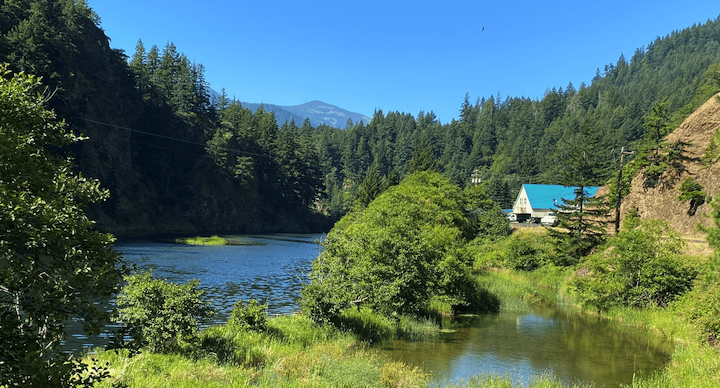
How USFWS Hatcheries, Partners Worked To Save Salmon Ahead Of ‘Heat Wave Of Epic Proportions’
THE FOLLOWING IS A NEWS STORY WRITTEN BY BRENT LAWRENCE, A U.S. FISH AND WILDLIFE SERVICE PACIFIC NORTHWEST REGION SPOKESMAN
Mike Clark and a team of fisheries professionals watched the weather forecast for late June and knew it meant serious problems for the more than 7 million salmon being reared in the Columbia River Gorge National Fish Hatcheries.
Each day the weather forecast for the Pacific Northwest brought increasingly dire predictions. What started as 104 degrees soon became a forecast of 108 degrees. Then 111 … 115 …. 117 degrees.
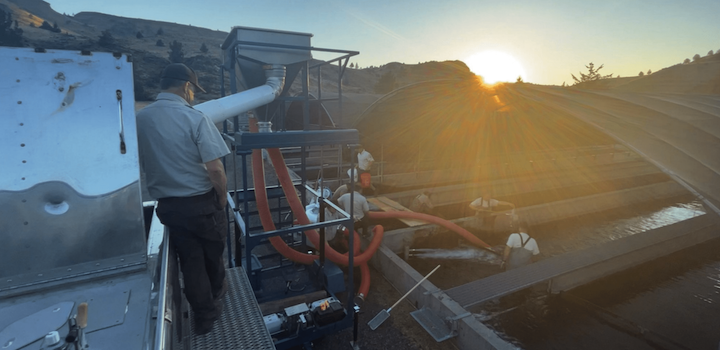
The numbers were unfathomable for the normally temperate Pacific Northwest. If they came true, they would exceed previous all-time record highs for many areas by almost 10%. Clark, manager of the Columbia River Gorge National Fish Hatchery Complex, and the staff knew it would have a pronounced impact on the water temperatures and the juvenile salmon at hatcheries in the complex.
That meant there was a lot of work with little margin for error as the heat dome settled in from June 25–29.
Fortunately, U.S. Fish and Wildlife Service’s Fish and Aquatic Conservation staff and partners at the Confederated Tribes of the Warm Springs and Yakama Nation were ready for the challenge.
“This was a huge effort in some demanding weather conditions,” Clark said. “It took a lot of people pulling together in extreme weather to protect an important and very delicate resource. This year was particularly significant because of some juvenile wild spring Chinook salmon we had at Warm Springs National Fish Hatchery, which are incredibly important to our tribal partners.”
When the week was all done, the numbers were staggering: Little White Salmon National Fish Hatchery (NFH) in the Columbia Gorge recorded an air temperature of 122 degrees with a reading of 160 skin-blistering degrees on the pavement on June 28.
Despite the hazardous heat, staff and partners worked together to safely transfer 348,000 spring Chinook salmon safely from Warm Springs NFH, and release another 7.15 million juvenile upriver bright fall Chinook salmon eight days ahead of schedule so they could make their way out to the Pacific Ocean before river temperatures hit the danger range.
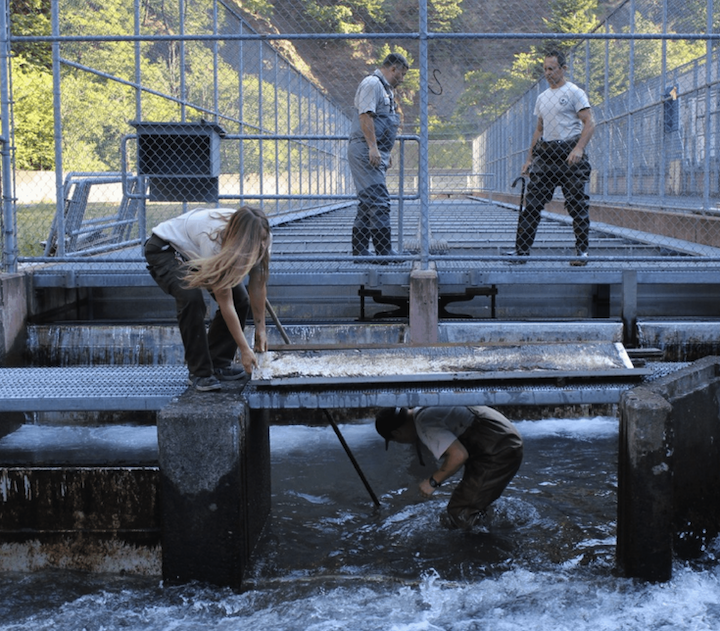
A Numbers Game
There’s a lot of pressure to make sure everything goes swimmingly when you’re dealing with this cold-water fish. Salmon are culturally significant to multiple Native American tribes, representing the symbol and lifeblood of many tribes who call the Pacific Northwest home. Salmon also are a critical part of the economy in the Pacific Northwest through recreational and commercial fishing, and the Service’s hatchery programs play a role in Columbia River Basin hydropower operations.
Without the Service’s National Fish Hatcheries, all of that could be in jeopardy.
In the days before the heat wave arrived, the Service’s fisheries leadership team focused on some important numbers: the predicted air temperatures, and water temperatures at the hatchery and in the Columbia River.
Sustained air temperatures well over 100 degrees would result in rapidly increasing water temperatures, leaving hatchery staff to weigh numerous factors to determine how to best protect the salmon.
“It’s always a balancing act trying to make the best decisions with the information you have available,” said Bob Turik, Little White Salmon NFH manager. “Chinook salmon thrive in temperatures in the 50s and low 60s but some, like the Warm Springs fish, have adapted to above average temperatures. Even with this adaptation, Warm Springs fish struggle to survive when water temperatures exceed 65 degrees, and especially when water hits above 70 degrees. Fish immune systems degrade and diseases really proliferate when the water temperature climbs like that. Trying to do anything with the fish at that temperature, even feeding them or walking next to a raceway, puts stress on the fish and they may die.”
Heating Up
Like most fish hatcheries, Warm Springs NFH in Oregon is dependent on the temperature of the river water that flows through them. Some hatcheries benefit from cool underground springs or a heavy snowpack to keep temperatures low.
Warm Springs NFH, however, draws directly from the Warm Springs River. The river is fed by snowpack in the Schoolie Flats and Schoolie Springs area, and some from the foothills of Mt. Jefferson in the Cascade Mountains. A drought across the much of the West had a profound impact on that snowpack.
“We’re 100% dependent on the Warm Springs River and the last several years we’ve had very low snowpack, which means that our water temperatures rise more quickly in the summer,” said Terry Freije, Warm Springs hatchery manager. “Combining our low snowpack with lower than normal river flows, this heat wave made our temperatures spike earlier than normal. Having a good snow pack is absolutely critical for keeping this facility’s water temperatures where is should be in the summer.”
Little White Salmon NFH, on the other hand, receives most of its water from the Little White Salmon River. It is fed by runoff from Mt. Adams’ snowpack and also from a few local springs, keeping their water temperature near 50 degrees even during the hottest parts of summer.
Warm Springs NFH has been forced to transfer salmon before, most recently in 2015, 2016 and 2017. The Service and the Confederated Tribes of Warm Springs, co-managers of the hatchery, were able to keep the salmon at Warm Springs NFH in 2018, 2019 and 2020.
But climate change forecasts suggested it would be a short-lived run of good luck. They were right.
The Service’s draft Climate Change Vulnerability Assessment for Warm Springs NFH, which was completed by seven technical experts from the Service who have complementary expertise. The assessment indicated water quality and quantity would continue to be a challenge based on climate models predicting warmer, wetter winters with more rain and less snow, and hotter, drier summers.
“Given recent history and climate change predictions, we’ve been proactively working on contingency plans to improve rearing conditions for the salmon,” Clark said. “Our fish health experts David Thompson and Katie Royer have modified the Warm Springs NFH Annual Operating Plan to include criteria that might trigger the movement of fish off station. Once we hit those triggers this year, we were prepared and jumped into action. I know we couldn’t have been successful without our co-managers from the Confederated Tribes of Warm Springs, and support from Yakama Nation and assistance from other hatcheries and Service staff.”
It’s a good thing they were prepared, because it was becoming increasingly clear that a heat wave of epic proportions was coming.
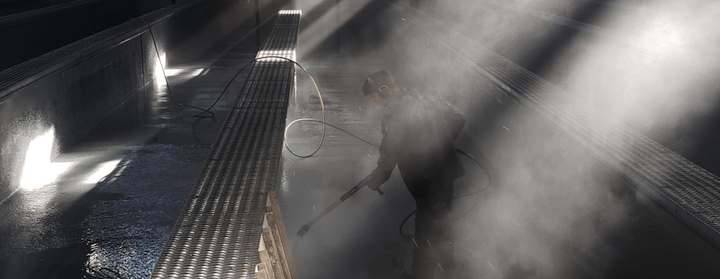
On the Move
An evaluation team met Tuesday, June 22, to discuss the salmon with the Confederated Tribes of Warm Springs. After exploring all options, the team and Tribe approved moving the salmon.
On Thursday, June 24, based on updated weather predictions of sustained temperatures above 110 for three consecutive days, the Service’s Pacific Region Fish Health Program recommended that all juvenile fish be moved from Warm Springs NFH immediately. Little White Salmon NFH was identified as the best destination thanks to its combination of cool water and available fish raceways.
Little White Salmon NFH staff worked overnight moving fish on station and cleaning to ensure they were prepared to receive the salmon from Warm Springs NFH. An additional fish transport truck was brought from Quinault NFH. Additional commercial driver license holders were brought in to help drive.
It would take about seven truck trips to move the 348,000 salmon, which included hatchery stock, wild genetic stock, and hatchery/wild hybrid stock that all needed to remain segregated.
At 3 a.m. on Saturday, June 25, two trucks were loaded with cool water at Little White Salmon NFH and driven 101 miles to Warm Springs NFH where staff from the fish hatchery, Confederated Tribes of Warm Springs’ Bureau of Natural Resources and the Pacific Region Fish Health Program staff were ready to help ensure the transfer went as quickly as possible.
After one of the two fish trucks developed electrical issues, David Thompson from the Service’s Pacific Fish Health Office called Yakama Nation Fisheries and asked for help. Yakama Nation quickly provided two fish transport trucks and two additional CDL drivers for Sunday.
The air temperature hit 114 degrees and the water temperature was 71 degrees at Warm Springs NFH as the last truck was loaded at 1:30 p.m. Sunday, June 27. That evening water temperatures topped 77 degrees in Warm Springs’ raceways, meaning the salmon likely wouldn’t have survived the night.
The 348,000 spring Chinook were successfully delivered to the 48-degree water at Little White Salmon NFH, where they’ll spend the summer before being transferred back to Warm Spring NFH in October. The juveniles will overwinter at Warm Springs NFH and be released in April 2022.
“From time immemorial, salmon have been intrinsically linked to the Warm Springs tribes who lived here,” Freije said. “They have ceremonies when the fish come back, and they give a blessing to the fish when they’re released. It’s a significant cultural and food resource to the tribe. It’s important that these fish survive. … But if climate change keeps on as predicted, this will be an even more serious problem.”
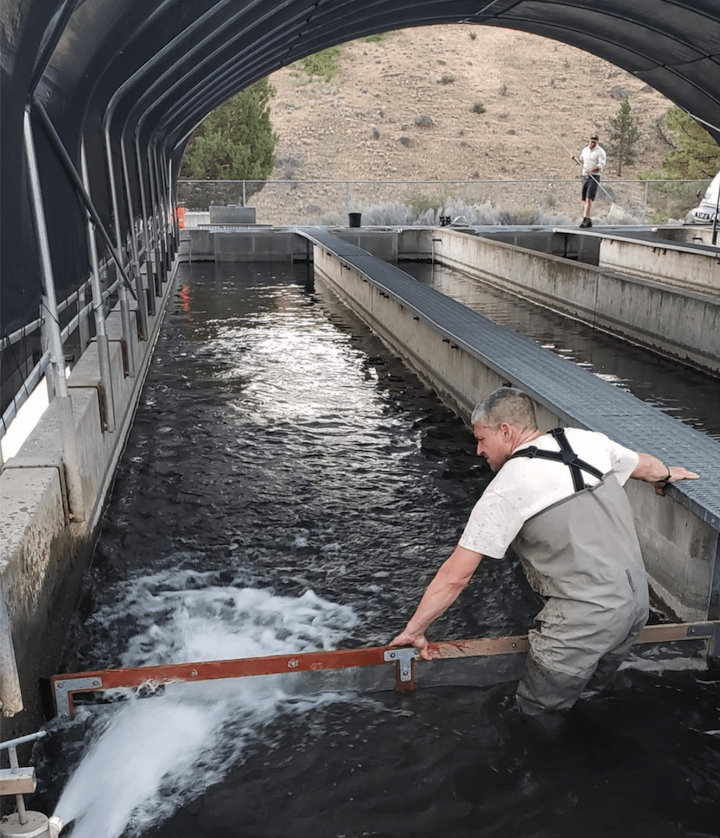
Hit the Water
With one crisis averted, the Little White Salmon hatchery staff quickly moved on to their next climate-caused challenge.
There were 7.15 million juvenile upriver bright fall Chinook salmon waiting for their journey from the Little White Salmon River to the Columbia River and, eventually, the Pacific Ocean. The original release date for the salmon was penciled in as July 7, but surging water temperatures in the Columbia River forced a change in plans.
The water temperature in the Columbia River at the Bonneville Dam, about 20 miles downstream from the hatchery, was increasing by about a degree every two days. It sat at 63.9 degrees on June 20, and was up to 68.7 degrees on June 28.
“July 7 was the date we had on the calendar, but we always stay flexible and adjust to the conditions around us,” Turik said. “The fish passed all the readiness tests and met all our criteria to be released. We needed to get them into the Columbia River before it hit 70 degrees so they would have the best chance to make it to the Pacific Ocean before the water got too warm.”
On Tuesday, June 29, hatchery staff removed the planks keeping the finger-sized fish in the raceways at Little White Salmon NFH. As the first light of the day hit, the 4.95 million juvenile salmon started their journey toward the Pacific Ocean.
On Wednesday, June 30, another 2.2 million upriver bright fall Chinook salmon were released from Willard NFH, which is situated a few miles further up the Little White Salmon River. Half were released at Willard NFH, and the rest were transported to Little White Salmon NFH for release.
“It was a big team effort from the whole complex and our tribal partners,” Turik said. “We had multiple hatcheries involved with providing staff and assistance. They’re all hard workers and they’re dedicated. They care. They worked on the weekend and overnight. They understand the importance of this resource to so many people.”
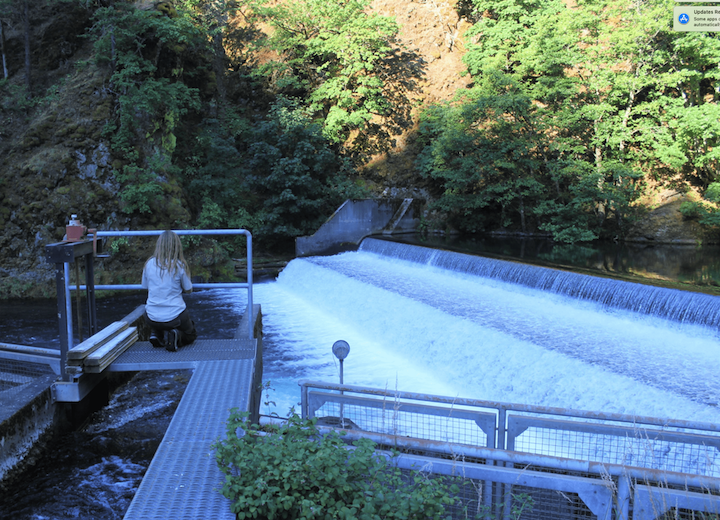
The Journey Begins
It takes two to three weeks for the juvenile salmon to swim the 160 river miles from Little White Salmon NFH to the Pacific Ocean. The juvenile salmon are released en masse so they stand a better chance of evading predators and reaching the ocean, where they’ll stay for three to five years before returning to the hatchery to spawn.
Like worried parents, Turik and Clark continued to monitor the Columbia River water temperature and await reports. Columbia River water temperatures hit 70 degrees at Bonneville Dam on Monday, July 5.
On Tuesday, July 6, they got some great news. Dean Ballinger, based at Bonneville Dam with the Pacific States Marine Fisheries Commission, shared the information.
“Your fish passed the project in great numbers over the weekend and passage remains high at present. The fish appear robust and vigorous and mortality is negligible,” his email read. “I don’t anticipate any change in fish condition at this point so no news is good news going forward. Another excellent passage!”
